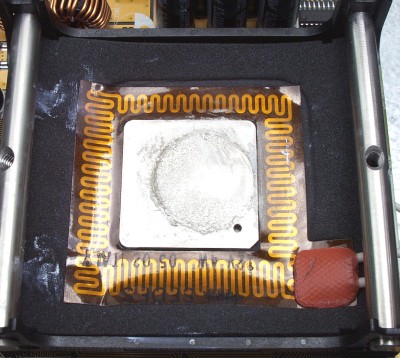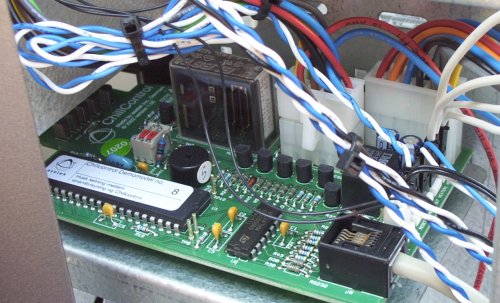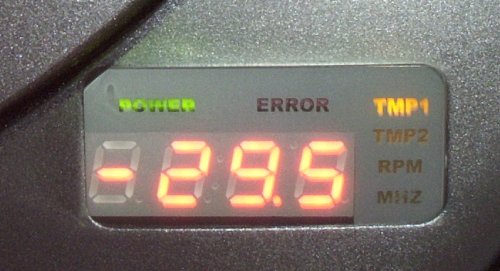Internals II

A look at the evaporator's head, the only contact we have with the processor. Just don't touch it when you've fired the VapoChill up. It can get to -30c very quickly in a non-load environment.

You'll notice the imprint of the evaporator's head on our Northwood CPU. A heating element is also included to ensure that no moisture is allowed to deposit in and around the processor. With sub-zero temperatures, moisture can be a real problem if not confronted.

To further ensure that the processor is kept dry, we're advised to coat the pins in the supplied thermal material. It may not look nice but it can perhaps save your shiny, new processor from the dreaded moisture syndrome.

Phase-change cooling is a relatively complicated affair. You need a capable monitoring mechanism. Asetek have decided to upgrade the Chillcontol unit, too. The unit keeps the system in stasis until the desired evaporator temperature has been established. It also serves as a comprehensive monitoring function. Once an evaporator temperature of -5c has been established. The desired operating booting temperature can take up to 3 minutes to establish as the compressor begins to work from a cold boot.
The Chillcontrol also gives us rudimentary PC statistics on the LCD mounted on the front bezel. Here you can just about make out the -29.5c evaporator temperature as we sit in Windows at 3GHz+. You can also view the system's temperature, the RPM of the fans and system's speed. Note that the evaporator's temperature isn't that of the processor.
That small RJ45 lead at the bottom of the above picture connects up to a serial port on your PC. With supplied software you can fine-tune various settings such as fan, speed, hold temperature, shutdown temperature, pin heater load, and the default view for the LCD.

So, the idea is quite simple but application is a little more difficult. We have a coolant pressurised into a liquid state by the new BD50 compressor. The liquid coolant is passed through a condenser and cooled further to ensure that it is indeed liquid. A throttling valve regulates the pressure to ensure that efficient heat transfer can take place. As the coolant turns into a gas, it absorbs the CPU's heat efficiently, keeping it at temperatures far below what standard cooling can achieve.
Let's now see just how well it performs as we strap our trusty Pentium 4 2.8GHz processor under the evaporator. I removed the supplied 2.53GHz processor as it wasn't the best of CPUs, even in a VapoChill.









